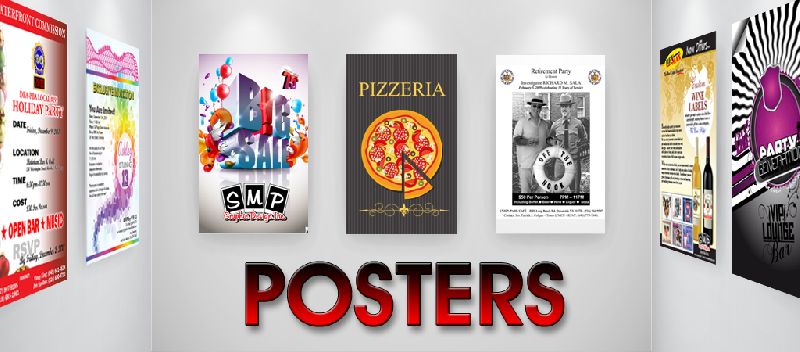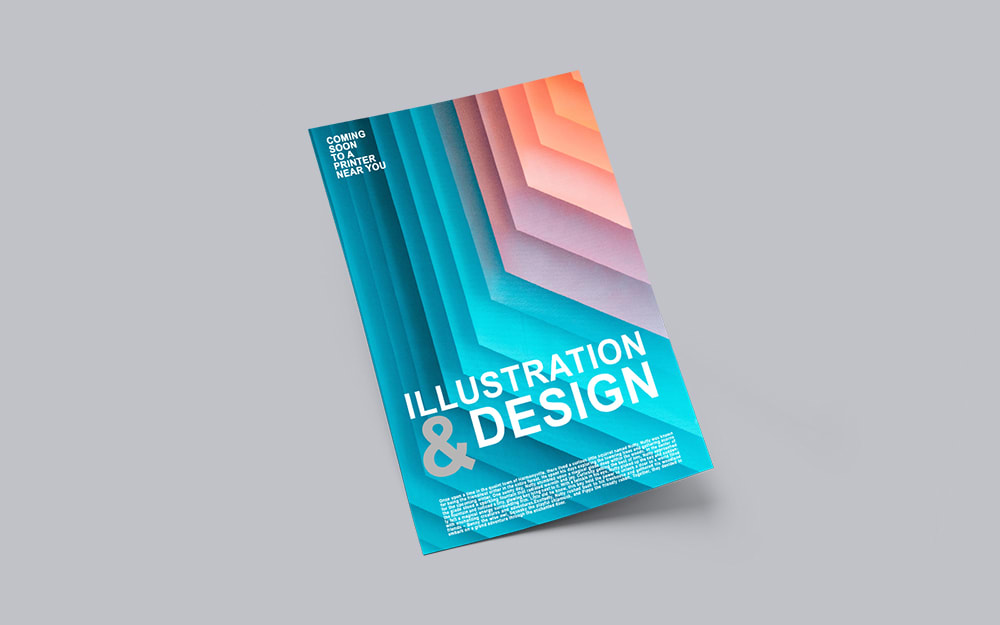Finish Options Explained
Finish Options Explained
Blog Article
Vital Tips for Effective Poster Printing That Captivates Your Audience
Creating a poster that absolutely astounds your audience needs a calculated technique. You require to recognize their preferences and passions to tailor your style efficiently. Choosing the right size and style is crucial for exposure. Top quality images and vibrant typefaces can make your message stick out. Yet there's even more to it. What about the mental impact of shade? Let's discover exactly how these elements interact to produce an outstanding poster.
Understand Your Target Market
When you're making a poster, recognizing your audience is important, as it shapes your message and layout selections. Assume about who will certainly see your poster. Are they students, experts, or a basic crowd? Recognizing this aids you customize your language and visuals. Usage words and pictures that resonate with them.
Next, consider their passions and needs. If you're targeting students, engaging visuals and catchy expressions may order their attention more than official language.
Lastly, think of where they'll see your poster. Will it remain in an active hallway or a silent coffee shop? This context can influence your style's shades, typefaces, and design. By maintaining your audience in mind, you'll develop a poster that properly communicates and astounds, making your message memorable.
Select the Right Size and Format
Just how do you determine on the best dimension and style for your poster? Think about the area readily available as well-- if you're limited, a smaller sized poster could be a much better fit.
Next, pick a style that complements your web content. Straight layouts function well for landscapes or timelines, while upright formats match portraits or infographics.
Do not neglect to examine the printing alternatives offered to you. Many printers offer basic dimensions, which can save you time and money.
Finally, maintain your audience in mind. By making these choices thoroughly, you'll produce a poster that not just looks great yet also efficiently interacts your message.
Select High-Quality Images and Videos
When producing your poster, choosing top quality pictures and graphics is crucial for an expert look. See to it you choose the appropriate resolution to prevent pixelation, and take into consideration using vector graphics for scalability. Don't neglect about color balance; it can make or damage the general appeal of your design.
Select Resolution Wisely
Choosing the ideal resolution is necessary for making your poster attract attention. When you use top quality images, they must have a resolution of at least 300 DPI (dots per inch) This guarantees that your visuals continue to be sharp and clear, also when watched up close. If your photos are low resolution, they may appear pixelated or fuzzy as soon as published, which can diminish your poster's effect. Always choose for photos that are particularly suggested for print, as these will certainly offer the very best results. Before completing your style, zoom in on your pictures; if they lose quality, it's a sign you require a greater resolution. Investing time in choosing the ideal resolution will certainly repay by creating a visually sensational poster that records your audience's focus.
Utilize Vector Graphics
Vector graphics are a game changer for poster style, using unparalleled scalability and high quality. When developing your poster, select vector documents like SVG or AI styles for logos, icons, and pictures. By utilizing vector graphics, you'll guarantee your poster astounds your target market and stands out in any kind of setting, making your style efforts absolutely rewarding.
Take Into Consideration Shade Equilibrium
Color balance plays an important duty in the overall impact of your poster. Too numerous intense shades can overwhelm your audience, while boring tones could not get hold of interest.
Selecting high-quality photos is vital; they need to be sharp and vivid, making your poster visually appealing. A healthy shade plan will certainly make your poster stand out and reverberate with viewers.
Decide for Bold and Understandable Font Styles
When it concerns typefaces, dimension actually matters; you desire your message to be quickly readable from a distance. Restriction the variety of font kinds to maintain your poster looking clean and professional. Likewise, don't neglect to utilize contrasting shades for clarity, guaranteeing your message stands apart.
Typeface Dimension Matters
A striking poster grabs attention, and font size plays a crucial duty in that first perception. You want your message to be conveniently readable from a distance, so select a font size that sticks out. Usually, titles ought to go to least 72 factors, while body message ought to vary from 24 to 36 points. This assures that even those that aren't standing close can comprehend your message quickly.
Do not neglect concerning pecking order; bigger dimensions for headings lead your target market with the info. Eventually, the ideal font style dimension not just attracts customers yet also maintains them involved with your content.
Limitation Font Types
Selecting the right font kinds is vital for ensuring your poster grabs focus and successfully connects your message. Stick to constant font style dimensions and weights to develop a power structure; this aids direct your target market with the information. Keep in mind, quality is key-- selecting strong and readable typefaces will make your poster stand out and maintain your target market involved.
Comparison for Clarity
To guarantee your poster records interest, it is crucial to make use of strong and readable font styles that develop solid comparison against the history. Select colors that stand out; for instance, review dark message on a light background or vice versa. This comparison not only improves visibility yet additionally makes your message easy to absorb. Stay clear of intricate or excessively decorative fonts that can perplex the visitor. Instead, choose for sans-serif font styles for a modern look and optimum legibility. Stay with a few font dimensions to establish power structure, making use of bigger message for headings and smaller for information. Keep in mind, your goal is to connect promptly and efficiently, so quality should constantly be your top priority. With the best font selections, your poster will certainly shine!
Make Use Of Color Psychology
Colors can evoke emotions and influence perceptions, making them a powerful tool in poster design. When you pick colors, consider the message you wish to share. Red can infuse excitement or seriousness, while blue typically promotes trust fund and calmness. Consider your target market, also; different societies may interpret shades distinctively.

Bear in mind that color mixes can affect readability. Check your choices by stepping back and examining the total impact. If you're going for a specific emotion or reaction, don't wait to experiment. Eventually, using shade psychology successfully can produce a lasting perception and draw your audience in.
Integrate White Room Properly
While it could seem counterproductive, including white area successfully is important for a successful poster style. White area, or negative area, isn't just empty; it's a powerful element that improves readability and focus. When you give your message and photos space to breathe, your target market can conveniently digest the information.

Use white room to develop an aesthetic hierarchy; this overviews the customer's eye to the most vital parts of your poster. Bear in mind, less is often extra. By mastering the art of white room, you'll produce a striking and efficient poster that mesmerizes your target market and communicates your message clearly.
Think About the Printing Products and Techniques
Choosing the ideal printing materials and strategies can considerably improve the overall effect of your poster. If your poster will be displayed outdoors, choose for weather-resistant products to assure durability.
Next, think regarding printing strategies. Digital printing is terrific for vibrant colors and fast turn-around times, while offset printing is excellent for large amounts and constant quality. Do not forget to explore specialty finishes like laminating or UV coating, which can protect your poster and add a polished touch.
Lastly, evaluate your budget plan. Higher-quality products often come with a costs, so equilibrium top quality with expense. By meticulously selecting your printing materials and techniques, you can develop an aesthetically spectacular poster that efficiently communicates your message and captures your audience's attention.
Frequently Asked Concerns
What Software application Is Best for Creating Posters?
When developing posters, software application like Adobe Illustrator and Canva attracts attention. You'll locate their straightforward interfaces and considerable devices make it simple to develop stunning visuals. Experiment with both to see which suits you best.
Just How Can I Guarantee Color Accuracy in Printing?
To ensure shade precision in printing, you must calibrate your screen, use shade accounts specific to your printer, and print test samples. These steps aid you attain the vibrant colors you visualize for your poster.
What Documents Formats Do Printers Prefer?
Printers usually choose file styles like PDF, find here TIFF, and EPS for their top notch learn this here now output. These layouts keep clarity and shade integrity, guaranteeing your layout festinates and expert when printed - poster prinitng near me. Prevent using low-resolution styles
Exactly how Do I Calculate the Print Run Amount?
To determine your print run quantity, consider your target market dimension, spending plan, and circulation strategy. Quote exactly how numerous you'll require, considering possible waste. Readjust based on previous experience or similar tasks to guarantee you fulfill demand.
When Should I Start the Printing Process?
You ought to start the printing procedure as quickly as you complete your layout and collect all required authorizations. Ideally, permit sufficient preparation for revisions and unexpected delays, going for a minimum of two weeks before your deadline.
Report this page